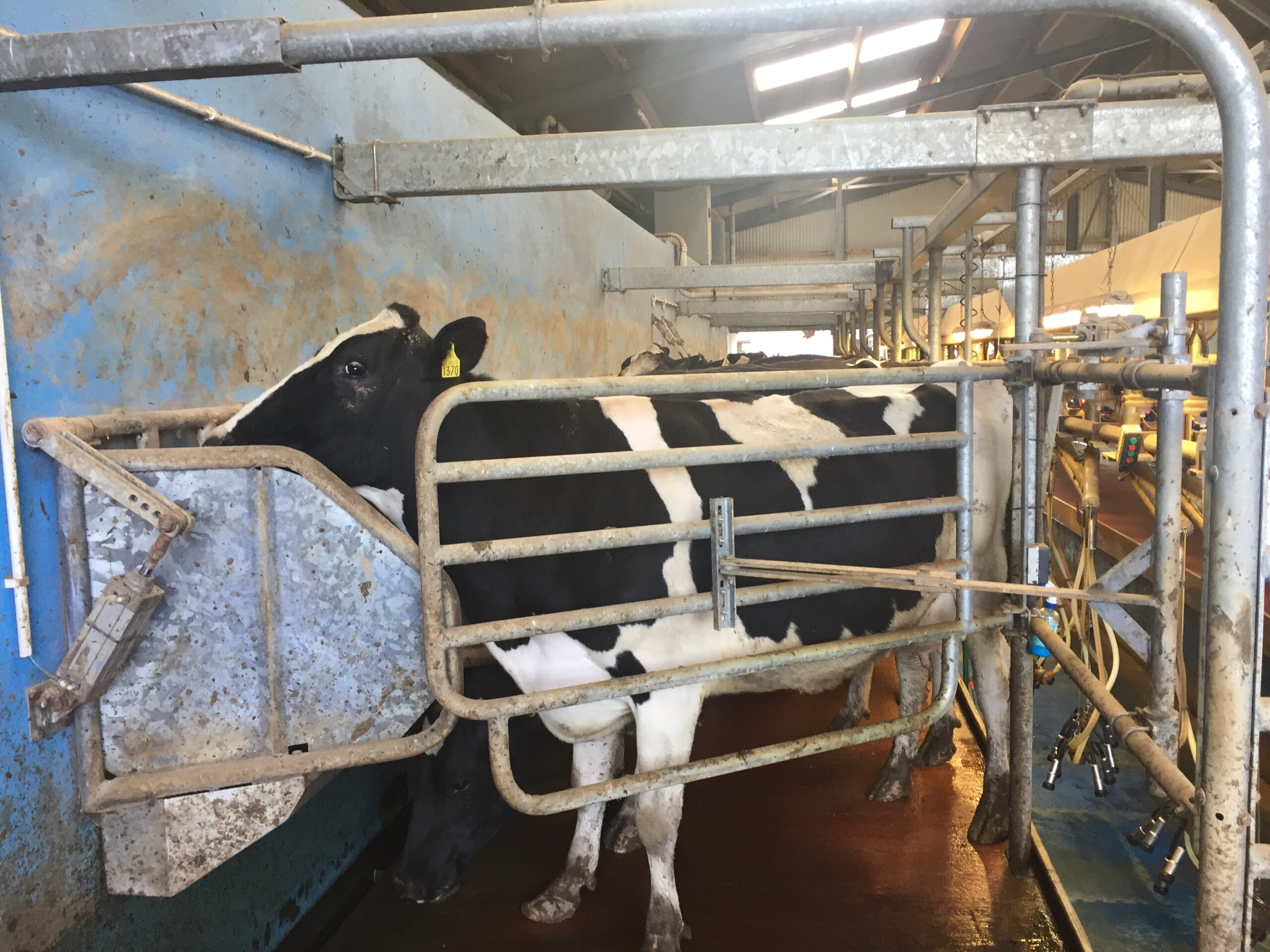Brothers Ian and David Lamberton – along with David’s sons Gareth and Paul – operate a thriving dairy business on 155ha in Fahan, Co. Donegal.
Respectively, they’re the fourth and fifth generations of Lambertons to farm adjacent to Lough Swilly, where the milking platform extends across 60ha and is home to a herd of 300 Holstein Friesian cows.
AgriLand recently visited the family-run operation to see how they’ve fared this spring and what they’re looking for when it comes to breeding the next generation of cows.
Stop-start grazing
Over recent years, the Lambertons have invested in grazing infrastructure and have placed a great emphasis on matching calving date to grass growth.
Touching on this spring’s grazing, Ian said: “Calving started on February 20 with the hope of getting cows out to grass at the beginning of March.
“However, we didn’t get out until March 5 – by day only. We struggled in the beginning of April and the cows were housed for a week.
“We’ve managed to get the cows back out to grass by day, but they’re still not out by night at this stage. The ground is still very tender from last back end.
We had a good grass year up until mid-August and, from then on, it has been a struggle.
“The ground got more damaged than we would have liked last back end and, with the winter being so wet, it really hasn’t recovered; it’s going to take a little while to recover.”
David added: “The cows are grazing out well and we’re happy enough. We’re hoping to get back out to grass by night in the next couple of days.
“Grass isn’t overly plentiful and we are just coming to the end of our second rotation. Growth has been slow over recent days, as it has been cold during the day.
“The cows are currently on 4kg of concentrate in the parlour and they’re getting another 6kg with the silage and wholecrop silage in the diet feeder. Between concentrate, grass, grass silage and wholecrop silage, they’re consuming over 20kg/day.”
From this level of feeding, the Lambertons’ cows are producing 30L/day. On an annual basis, each individual cow in the herd produces 6,000-6,500L and approximately 480-500kg of milk solids.
David added: “The potential of the herd is slightly more than that. We are feeding more meal this year and we are seeing a response.”
The Lambertons are members of the Inishowen Discussion Group – coordinated by Teagasc’s Tommy Doherty – and this year’s focus lies on trying to replenish the milking platform.
Since last August, farms in the area have been severely affected by the weather – particularly last autumn’s floods – and the main aim is to try and bring grassland back into shape this year.
The fodder situation
Many parts of Ireland were gripped by fodder shortages this spring and Co. Donegal was not different.
Touching on how the farming business coped with the extended winter, Ian said: “We did buy some silage before calving, so we are going to be OK.
However, sourcing straw was an issue. We have neighbours that we buy straw from every year and some of the straw wasn’t baled until February.
“It was bedding straw at the time, but we were glad to get it. We are actually OK for straw now, but we thought straw was going to be a bigger issue than silage until that spell of good weather came in February.”
Breeding and surplus stock
Breeding will kick off on May 15 and the majority of cows will be bred using AI to Holstein Friesian genetics.
When it comes to selecting bulls, David said: “We keep an eye on the EBI (Economic Breeding Index) and I like to have a reasonable EBI; but it’s not the number one criteria that we go for.
“I like a certain amount of type as well and that rules out some of the high-EBI bulls. Protein and fertility are the two figures that we would be watching for when we are looking to pick a bull. The herd is fairly fertile and our calving interval was 364 days last year,” he noted.
Each year, the Lambertons calve down 300 with the aim of milking 240 cows. All surplus stock are sold to farmers either in milk or at the point of calving.
Touching on this venture, David said: “We are breeding too many heifers, so we are ending up with surplus stock and it’s a matter of trying to do something with them.
“We have a number of repeat customers that come back every year and new customers looking for stock as well. We sell both heifers and cows and it depends on what other farmers are looking for and they’re normally sold as freshly-calved cows or at the point of calving.
“Most people like them calved because they can see exactly what they are getting.”







